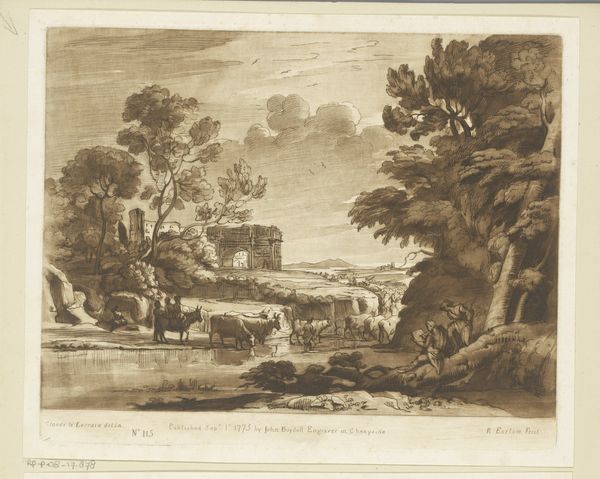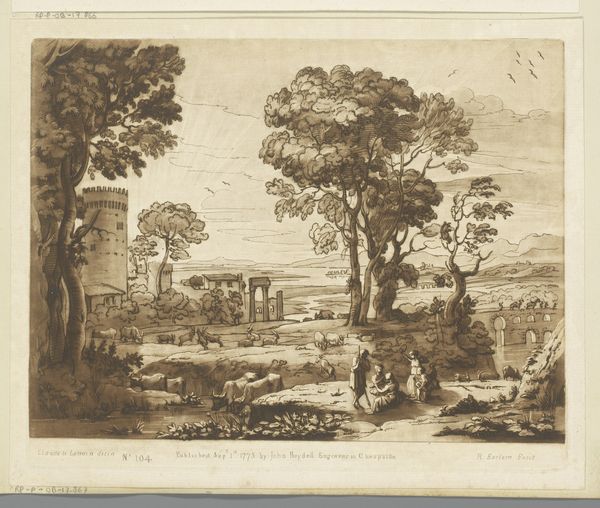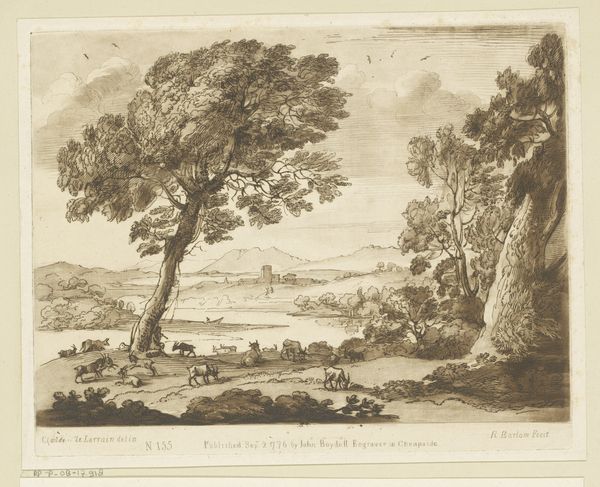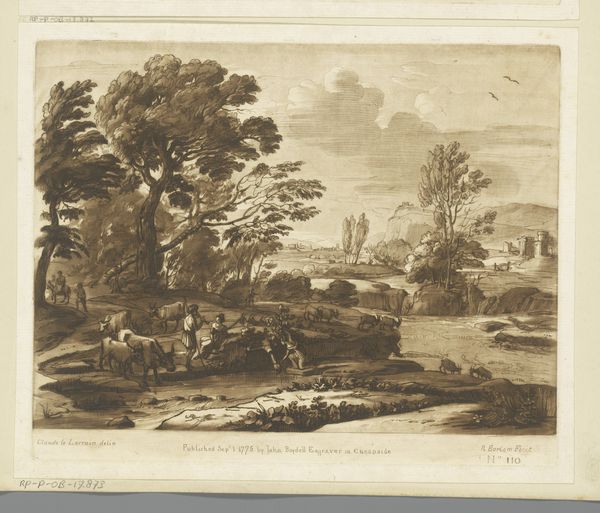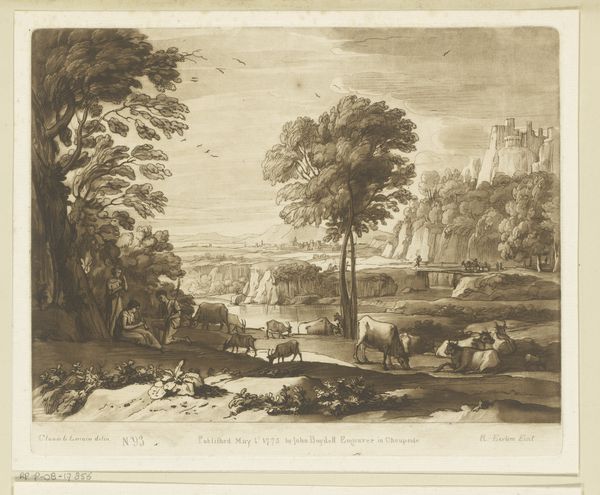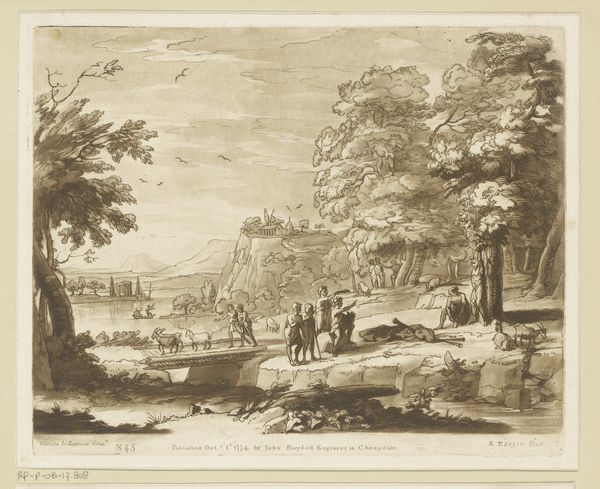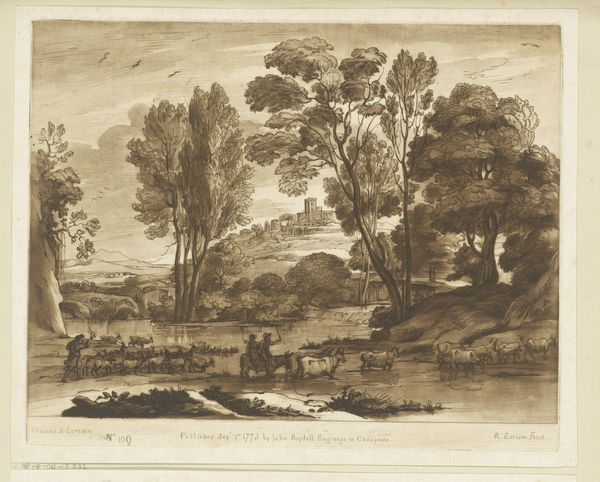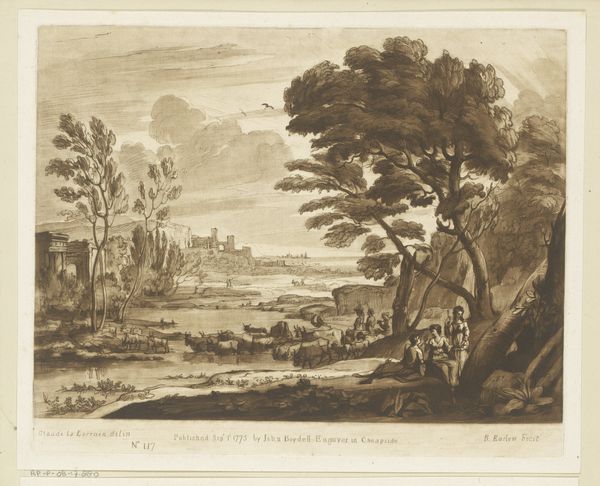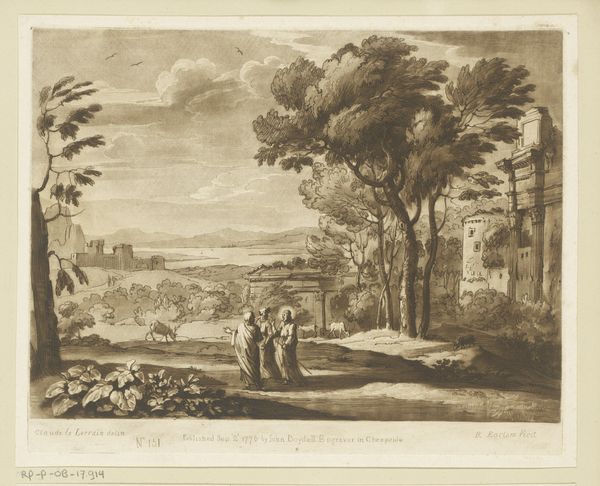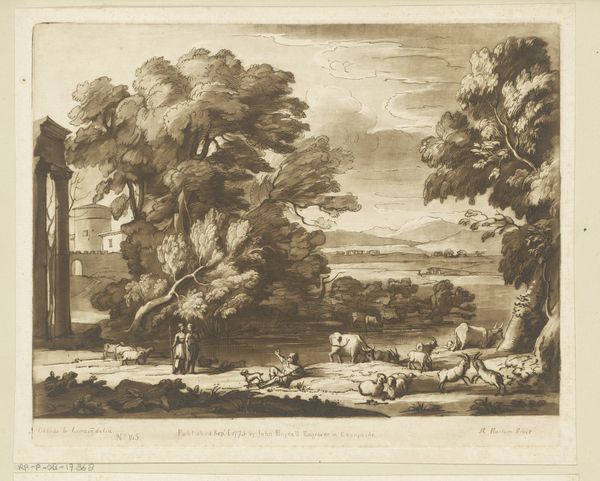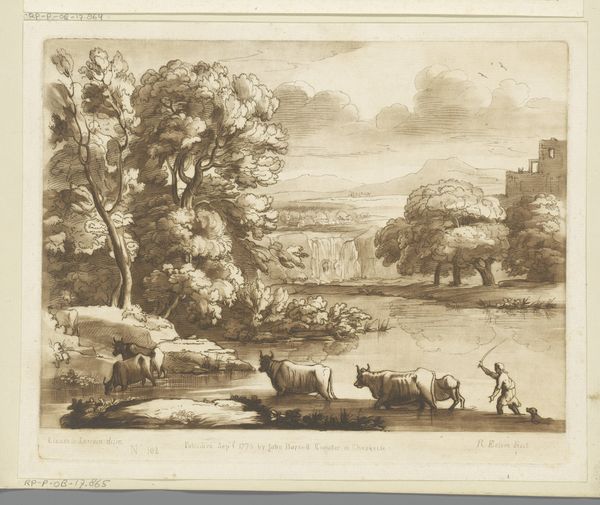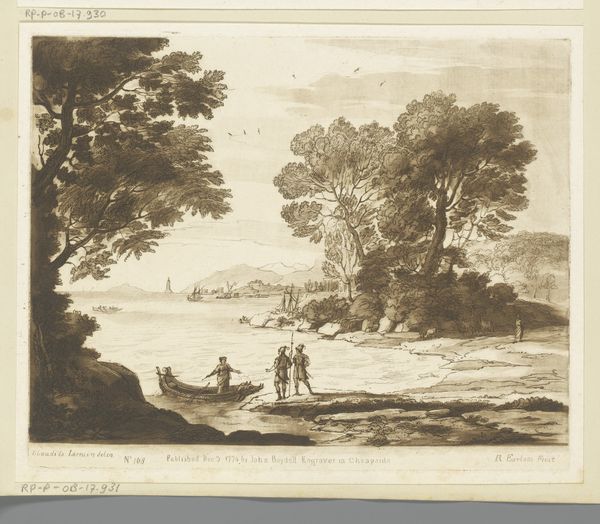
print, engraving
# print
#
landscape
#
classical-realism
#
charcoal drawing
#
genre-painting
#
engraving
#
watercolor
Dimensions: height 208 mm, width 258 mm
Copyright: Rijks Museum: Open Domain
Editor: Here we have "Bergachtig landschap met herder en vee", or "Mountainous landscape with shepherd and cattle," created possibly between 1775 and 1779, attributed to Richard Earlom. It's a print using engraving and other techniques, currently held at the Rijksmuseum. I’m struck by how meticulously the animals are rendered. What's your perspective on this pastoral scene? Curator: It's fascinating to consider this image as a product of its time. Think about the materials involved: the copperplate, the inks, the paper. Each component had its own supply chain, reflecting trade routes and industrial capabilities. Editor: Right, I never considered the trade routes. Curator: Earlom was reproducing someone else's work—likely a drawing. So we have layers of labor: the original artist, then Earlom meticulously translating that vision through the physical demands of engraving. The printmaking process allowed for wider distribution. How do you think this affected consumption and reception of the artwork? Editor: Presumably, it meant more people had access, and cheaper…mass consumption for art! Curator: Exactly! It blurs lines between "high art" and a commodity, doesn't it? Think about the social context: rural life becoming idealized as urban centers grew, driving demand for picturesque imagery. Editor: So this wasn’t just about aesthetics; it was about the social forces driving its creation and distribution. It puts a new perspective to the amount of effort just to enjoy what looks to be, at first glance, just another pretty drawing. Curator: Precisely. Focusing on the materials and processes used shows us not only artistry but also the economic and cultural networks that shaped this image and its place in society.
Comments
No comments
Be the first to comment and join the conversation on the ultimate creative platform.
